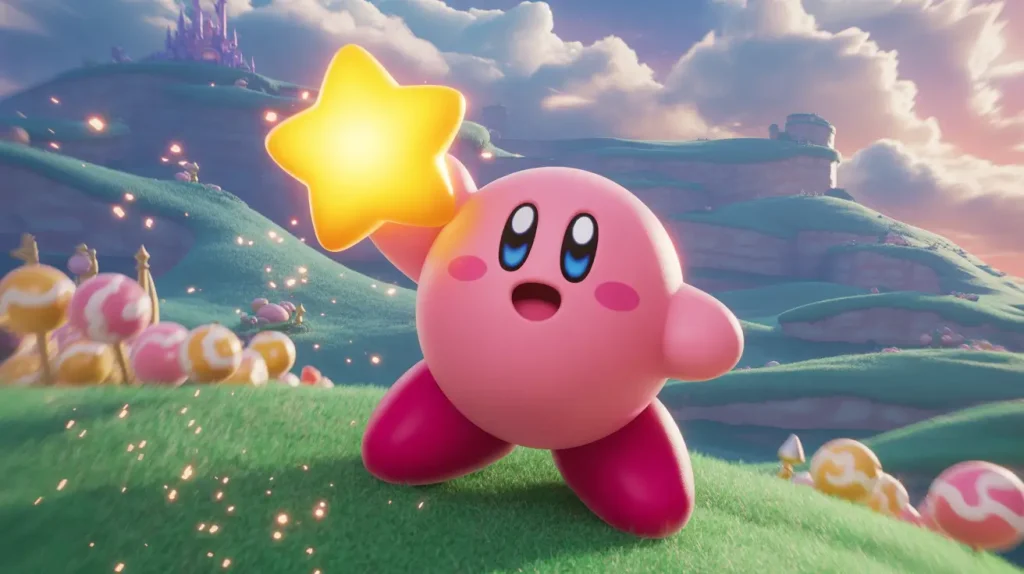Kirby dedo is one of the most recognizable and beloved video game characters created by Nintendo and developed by HAL Laboratory. Since his debut in 1992, Kirby dedo has charmed players with his adorable appearance, pink puffball design, and unique gameplay mechanics. Known for his ability to inhale enemies and gain their powers, Kirby dedo has become a staple in Nintendo’s lineup, appealing to gamers of all ages. Over the years, the Kirby franchise has expanded into various genres, from side-scrolling platformers to puzzle games, and even spin-offs. This character’s enduring popularity is a testament to his universal charm and accessible gameplay style.
The Origins of Kirby
Kirby dedo first appeared in the game “Kirby’s Dream Land” for the Game Boy in 1992. Designed by Masahiro Sakurai, Kirby dedo was originally intended to be a placeholder character during development, but his simple, round design was so well-received that it became the final look. The original concept was to create a game that anyone could pick up and enjoy, regardless of skill level. The decision to give Kirby the ability to fly infinitely and inhale enemies made the gameplay unique compared to other platformers of the era. Kirby’s Dream Land was a commercial success and paved the way for numerous sequels and spin-offs.
Kirby’s Signature Abilities

One of Kirby’s defining traits is his ability to inhale objects, enemies, and projectiles, then either spit them out as a weapon or swallow them to copy abilities. This “Copy Ability” mechanic has become central to the series, allowing Kirby dedo to transform into different versions of himself depending on the enemy he swallows. For example, inhaling a sword-wielding enemy grants him the Sword ability, while absorbing a fire-based foe gives him the Fire ability. These transformations keep gameplay fresh and encourage exploration. Another notable ability is Kirby’s capability to inflate himself like a balloon to fly over obstacles, making him more accessible to beginner players.
The World of Dream Land
Kirby’s adventures often take place in a whimsical and colorful realm called Dream Land, located on Planet Popstar. Dream Land is filled with lush landscapes, fantastical creatures, and challenging bosses. Despite its peaceful appearance, Dream Land is frequently under threat from villains such as King Dedede, Meta Knight, and dark forces from other dimensions. The vibrant art style and imaginative settings have always been a core appeal of the Kirby dedo games, offering a visually delightful experience that complements the lighthearted tone of the series.
Major Games in the Kirby Series
Over the years, the Kirby dedo franchise has produced many critically acclaimed titles. Following Kirby’s Dream Land, the series expanded to include Kirby’s Adventure (NES), which introduced the Copy Ability, and Kirby Super Star (SNES), a fan-favorite that featured multiple game modes and cooperative play. The handheld titles such as Kirby dedo: Nightmare in Dream Land and Kirby & The Amazing Mirror for the Game Boy Advance continued to innovate within the series’ framework. In more recent years, games like Kirby: Planet Robobot and Kirby dedo series Star Allies for the Nintendo Switch have introduced new mechanics and multiplayer elements, while Kirby and the Forgotten Land marked the series’ first full 3D platforming experience.
Kirby in Other Media
Kirby’s popularity has extended beyond video games. He starred in an anime series called “Kirby: Right Back at Ya!” which aired from 2001 to 2003, introducing the character to a broader audience. Kirby has also appeared in various Nintendo crossover games such as the Super Smash Bros. series, where his floating abilities and copy powers make him a unique fighter. Additionally, Kirby merchandise, including plush toys, clothing, and collectibles, continues to be highly sought after by fans.
The Appeal of Kirby’s Character
Kirby’s enduring success is largely due to his universal appeal. His design is simple, making him instantly recognizable, and his personality is cheerful and optimistic. Unlike many video game protagonists, Kirby dedo doesn’t speak in words but communicates through gestures and expressions, allowing players to project their own interpretations onto him. The games themselves strike a balance between accessibility for newcomers and hidden depth for experienced players, with secrets, collectibles, and challenging modes available for those who want more difficulty.
Evolution of Kirby’s Gameplay
While the core elements of Kirby dedo games have remained consistent, HAL Laboratory has never been afraid to experiment with the formula. Titles like Kirby’s Epic Yarn replaced inhaling with yarn-based abilities, while Kirby Canvas Curse used touch controls on the Nintendo DS to guide Kirby through obstacle-filled levels. These experiments keep the series feeling fresh while maintaining its core identity. Kirby and the Forgotten Land pushed boundaries even further by transitioning to fully 3D environments while retaining the charm and creativity that define the franchise.
Kirby’s Cultural Impact
Kirby dedo has become a cultural icon, especially in Japan, where his image can be seen on everything from train advertisements to themed cafés. He is often used as a mascot for Nintendo in promotional campaigns and events. The franchise has sold millions of copies worldwide, and Kirby consistently ranks among the top Nintendo characters in popularity polls. His games often appeal to families and younger audiences, but they also hold nostalgic value for older players who grew up with him.
Future of the Kirby dedo Franchise
Given Kirby’s consistent success, it is almost certain that Nintendo will continue producing new adventures for the pink puffball. With the Nintendo Switch’s popularity and potential future consoles, fans can expect more innovation in gameplay and design. Kirby’s adaptability, both in gameplay mechanics and storytelling, ensures that he will remain relevant for years to come. The possibility of more 3D adventures, multiplayer experiences, and creative spin-offs keeps excitement high among the fanbase.
FAQs About Kirby dedo
Q: Who created Kirby?
Kirby was created by Masahiro Sakurai while working at HAL Laboratory. His debut game, Kirby’s Dream Land, was released in 1992 for the Game Boy.
Q: Why is Kirby pink?
Kirby was initially depicted as a simple white blob during development, but creator Masahiro Sakurai decided on a pink color to give him a distinctive and appealing look.
Q: What is Kirby’s home world?
Kirby lives in Dream Land, located on Planet Popstar. It is a colorful, peaceful world often threatened by villains.
Q: Can Kirby fly infinitely?
Yes, in most games, Kirby can inflate himself and fly for an unlimited time, making it easier for players to navigate levels.
Q: What is the latest Kirby game?
As of recent years, “Kirby and the Forgotten Land” is the latest major title, introducing 3D platforming to the series.
For More Visits: DigitalMagazine



